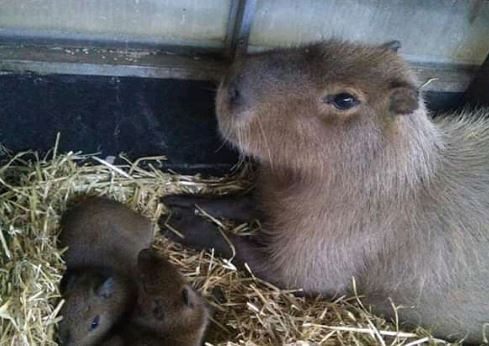Capybaras are native to South America but can be found in other nations. Capybaras are known for their large size and appetite; they are herbivores and prefer eating aquatic plants, tree barks, grasses, and fruits.
The large capybara species (Hydrochoerus hydrochaeris) have reddish-brown fur, short legs, and a large, flat head. These giant capybaras as well as the smaller ones are hunted for their meat and skin. While capybaras are hunted in some places, they are adopted and kept as pets in other regions.
The capybara has long, sharp, ever-growing teeth, which it uses to cut grasses and chop off the bark of trees. Also, their sharp incisors are a weapon of defense for them and they can bite when attacked.
These large rodents come from countries such as Columbia, Ecuador, Argentina, Peru, Brazil, Uruguay, Guyana, Venezuela, and Suriname. Recently, some capybaras have been found in other countries such as Nicaragua, Costa Rica, and Panama.
Perhaps, you want to know if there are Capybaras in Mexico. While capybara may be found in Mexican zoos, rodents may be found in the wild of Mexico.
Capybaras live in the wild and are very friendly with many animals but are hunted by caimans, eagles, ocelots, jaguars, anacondas, pumas, and humans.
Capybaras are good swimmers and will stay underwater to hide from predators. Their sticky, webbed toes also help them climb trees to evade danger. In this article, we will see whether there are capybaras in Mexico.
Can You Find a Capybara In Mexico?
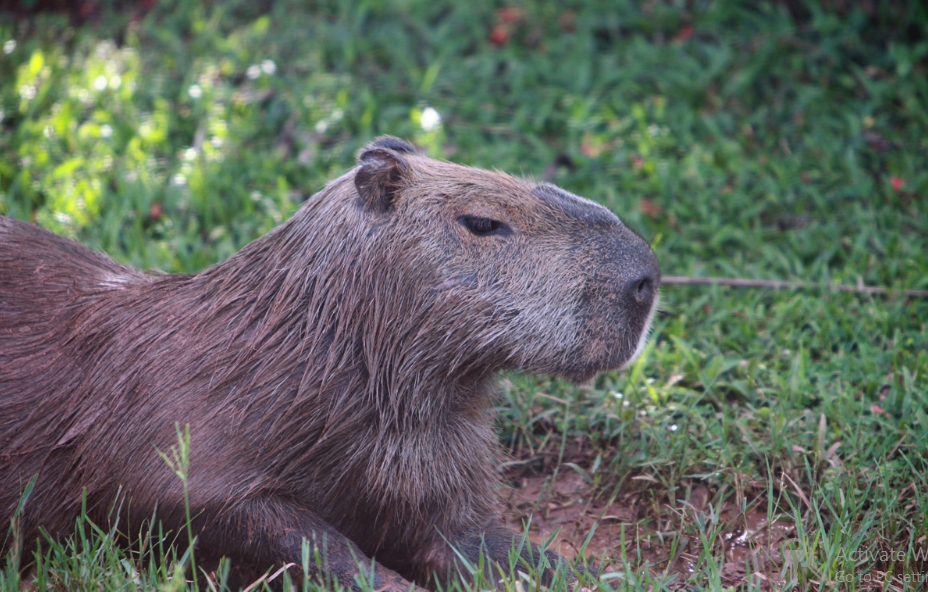
There are several reports of sightings of capybaras in Mexican cities and villages but these reports are yet to be verified, so it is not yet known if these rodents have a strong population in Mexico.
If capybaras are not native to Mexico, how did they get there in the first place? There is no accurate report or research on how these animals found their way onto Mexican soil.
The capybaras in Mexico may have been imported and taken to wildlife parks and zoos. If there are other capybaras in the Mexican forest, it is probable that they escaped from captivity or sojourned from neighboring countries in their quest for food and safety.
Mexican farmers should be wary of capybaras as they can destroy their crops and ruin their harvest. If you see a capybara and you are not willing to adopt and accommodate it in your home, it’d be best to report it to the wildlife agency in your region rather than kill it.
Although the current capybara population is stable, it is imperative to preserve the life and existence of these rodents by keeping them where they won’t be endangered.
If you want to accommodate a pet capybara in Mexico, you must understand what it takes to maintain a capybara, including their safety and diet.
What is Mexican Agouti?
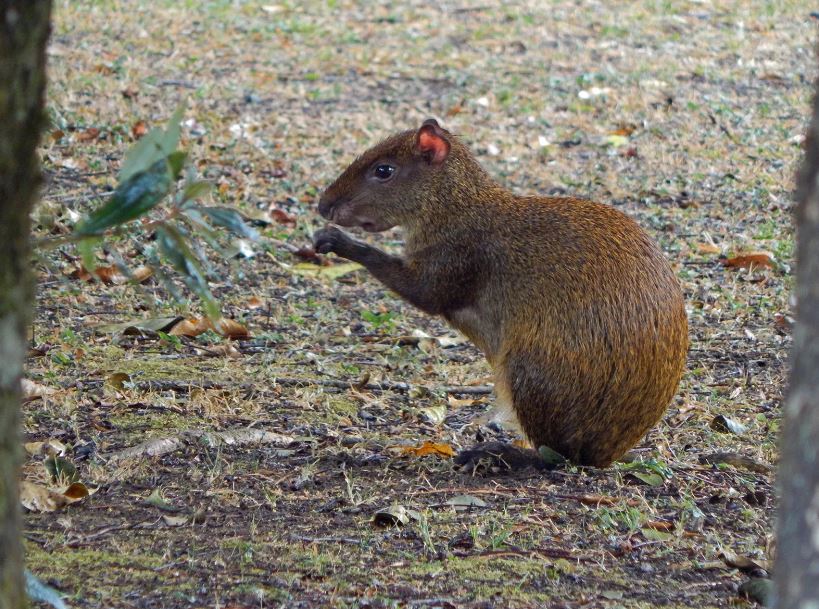
Mexican agouti is often mistaken for the capybara; they are not the same. The Mexican agouti (Dasyprocta mexicana) are native to Mexico and Central America.
These little, rodent-like animals are closely related to other agouti species, including the South American agouti (Dasyprocta leporina) and the Central American agouti (Dasyprocta punctata).
Mexican agouti are known for their reddish-brown fur and measure around 24 and 30 cm, making them smaller than the larger capybara, which can grow to over 1.5 m in length.
Also, the Mexican agouti weighs lighter (around 2 to 4 kg) than the larger capybara (Hydrochoerus hydrochaeris), which weighs over 65 kg. The Mexican agouti are found in forests and are active at dawn and dusk. Unlike capybara, the Mexican agouti are solitary creatures, especially during the breeding season.
They spend a significant portion of their time on the ground sourcing food. The Mexican agouti typically eats nuts, leaves, fruit, and even small birds, mammals, and reptiles.
Furthermore, the Mexican agouti isn’t as a skillful swimmer as the capybara, so they tend to avoid water. There are several differences between the capybara and the Mexican agouti but they share certain similarities.
Both the capybara and the Mexican agouti share the same name – “carpincho.” You can identify a Mexican agouti by its light, small size and reddish-brown fur. Also, they have a long, thick tail but it isn’t as thick as that of the capybara’s.
Conclusion
The capybara (Hydrochoerus hydrochaeris) is the world’s largest rodent; they are native to South American countries such as Peru, Ecuador, Argentina, Brazil, Venezuela, Bolivia, etc.
Capybaras are not native to Mexico but can be found in the wild. Many people easily mistake the Mexican agouti (Dasyprocta mexicana) for the capybara.
Capybara are growing in popularity and can be found in many countries where they are not inhabitants. When next you visit Mexico and spot a capybara, be sure to take pictures.
Lastly, if you live in Mexico and want to own a capybara, be sure to check the regulations and laws in your state or region.

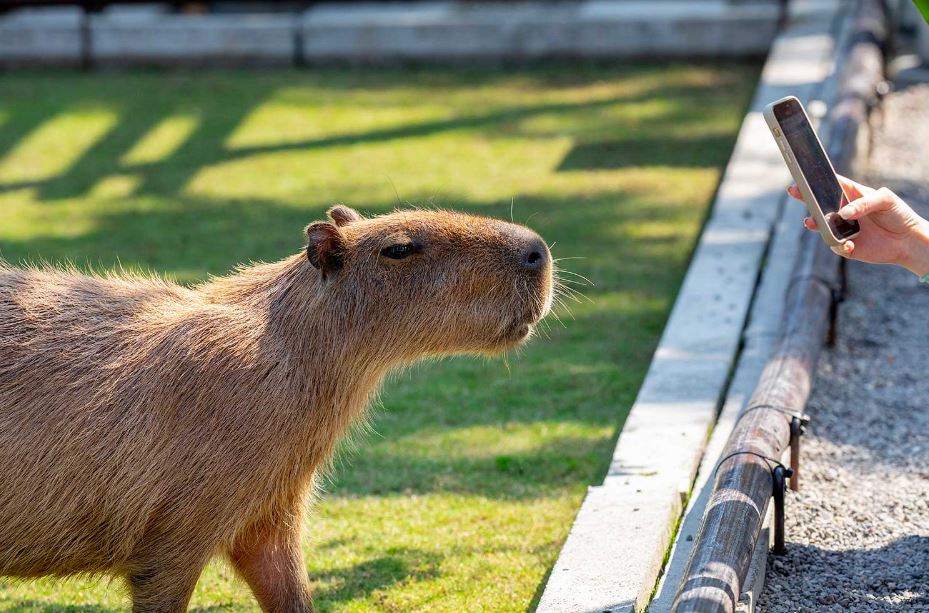
![Capybara Meat And Its Culinary Uses - [Every You Should Know] Capybara Meat & Culinary Uses](https://capybaratips.com/wp-content/uploads/2023/03/Capybara-meat-250x200.webp)

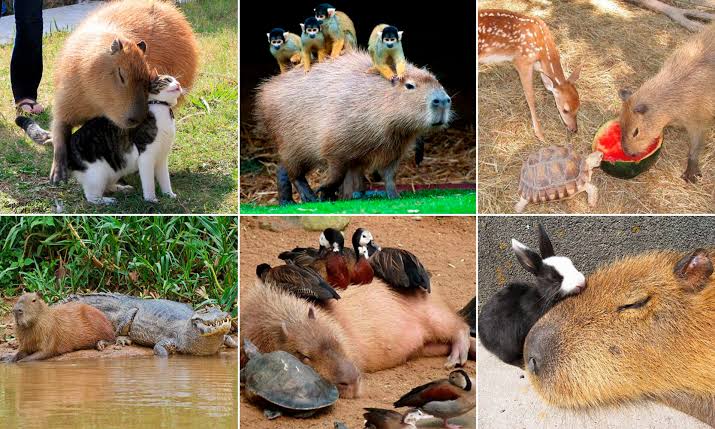
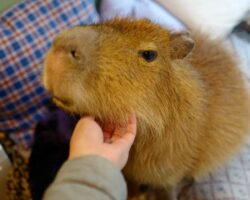

![How Long Do Capybaras Live? - [Answered] How Long Do Capybaras Live](https://capybaratips.com/wp-content/uploads/2023/03/Capybara-Pix-250x200.webp)
